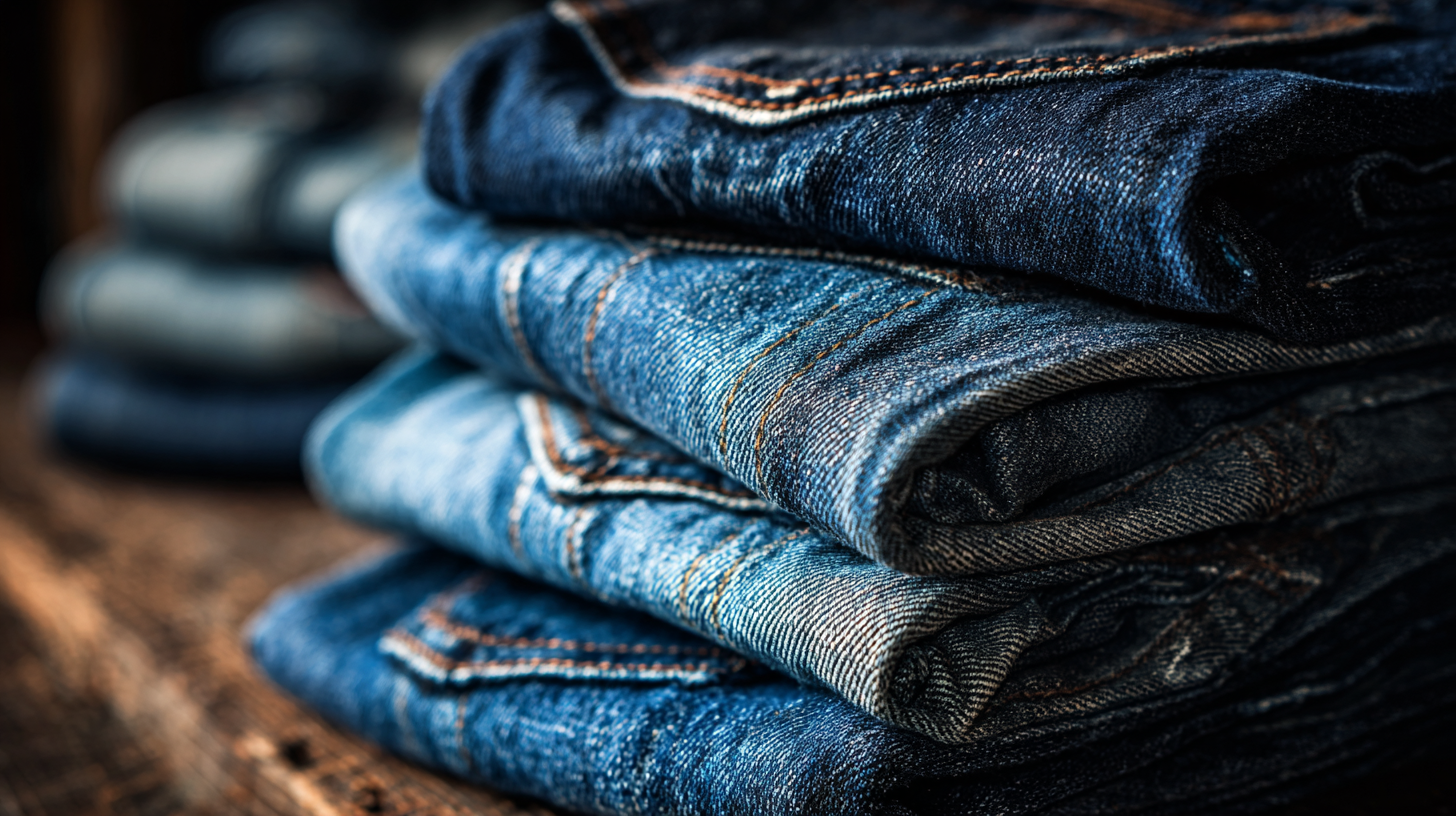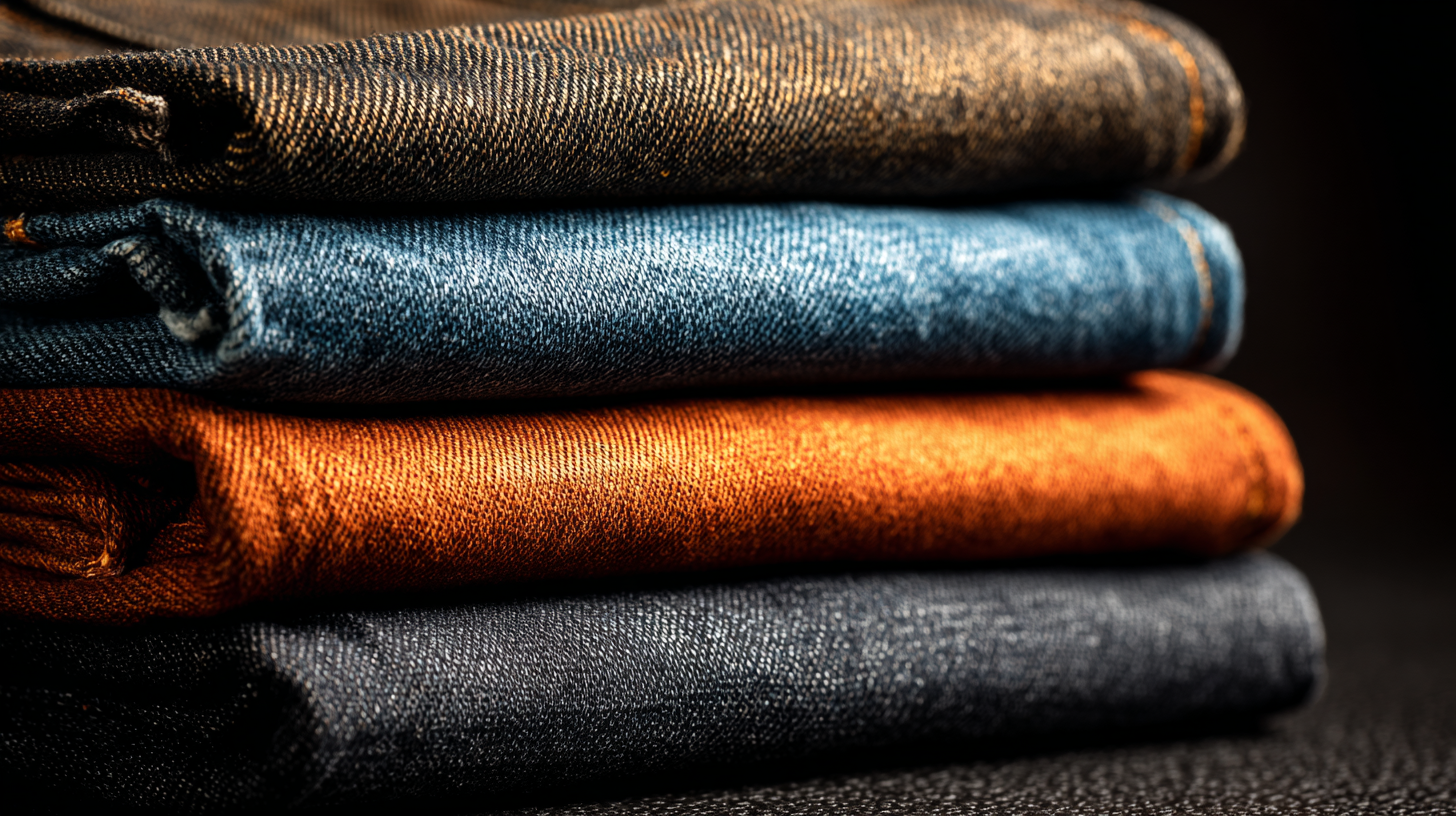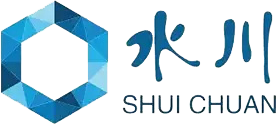The demand for sustainable fashion continues to rise, prompting brands to explore innovative materials and manufacturing techniques. One such innovation is Sulphur Denim, which is celebrated for its eco-friendly dyeing process and distinctive colorfastness. According to the Global Denim Market Report 2022, the use of Sulphur Denim has increased by 15% in global production, driven by a growing consumer preference for environmentally responsible products. This type of denim not only offers durability but also reduces the environmental impact associated with traditional dyeing methods. As brands strive to align their offerings with consumer values, sourcing the highest quality Sulphur Denim from around the world becomes paramount. In this blog, we will explore top strategies to effectively source Sulphur Denim, ensuring that brands can meet market demands while maintaining sustainable practices.

Sulphur denim has gained significant traction in the global textile market, attributed to its unique dyeing process and eco-friendly properties. According to a report by Research and Markets, the global denim market is projected to reach $92.28 billion by 2025, with a noticeable shift towards sustainable practices. Innovative sourcing techniques are critical for tapping into this expanding market efficiently.
One effective approach is the implementation of blockchain technology in the sourcing process. By utilizing blockchain, brands can ensure transparency and traceability in their supply chains, which is essential for maintaining sustainability, as highlighted by a McKinsey report stating that 67% of consumers are willing to pay more for sustainable brands. Additionally, fostering partnerships with local suppliers who specialize in eco-friendly production reduces carbon footprints and enhances community engagement, as evidenced by the work of organizations like the Better Cotton Initiative, which have shown that local sourcing can lead to improved practices and efficiencies in the supply chain.
Moreover, adopting digital tools such as AI and big data analytics allows brands to forecast trends and manage inventory more effectively. Research from Statista indicates that the integration of these technologies can reduce production lead times by up to 30%, enabling brands to respond to market demands swiftly and ensuring that high-quality sulphur denim reaches consumers promptly. By embracing these innovative strategies, companies can position themselves at the forefront of the sulphur denim market worldwide.
This chart presents the quality ratings of sulphur denim sourced from various countries. According to recent evaluations, Bangladesh ranks the highest in quality, followed closely by India and Turkey.
As we approach 2025, the denim industry is poised for significant transformation driven by emerging technologies. Innovations such as artificial intelligence and blockchain are not only enhancing supply chain transparency but also improving the sustainability of denim production. Brands are beginning to leverage AI for predictive analytics, allowing them to anticipate market trends and consumer preferences more effectively. This not only helps in sourcing sulphur denim but also ensures that the manufacturing processes are more efficient.
Tip 1: Embrace automation in your sourcing processes. Using robotic process automation can streamline operations, making it easier to identify and engage with top suppliers of sulphur denim worldwide.
Moreover, advancements in digital textile printing and eco-friendly dyeing techniques are paving the way for more sustainable practices. These technologies reduce water usage and toxic waste, which are critical issues in denim production. As consumers become more environmentally conscious, brands that adopt these innovative methods can differentiate themselves in the marketplace.
Tip 2: Invest in partnerships with tech firms focusing on sustainable solutions. Collaborating with these innovators can provide your brand with access to cutting-edge techniques that enhance both your product quality and environmental responsibility.

The textile industry faces increasing scrutiny concerning its environmental impact, making sustainable practices in sulphur denim manufacturing vital for future development. Recent reports indicate that denim production accounts for approximately 20% of the global water pollution from textile manufacturing. By adopting sulphur dyeing techniques, manufacturers can reduce water usage significantly—up to 70% compared to traditional dyeing methods—while also yielding richer colors that resist fading. In fact, the Global Fashion Agenda's 2022 Pulse of the Fashion Industry report emphasizes the importance of sustainable materials, noting that 75% of global consumers are willing to pay more for sustainable fabrics.
Implementing eco-friendly processes is not limited to dyeing but extends throughout the entire production chain. Innovations such as waterless dyeing technologies and organic cotton sourcing can further minimize environmental footprints. According to the Sustainable Apparel Coalition, companies that integrate sustainability into their operations can improve their efficiency by up to 30%, while also enhancing brand loyalty among environmentally-conscious consumers. As more brands adopt these strategies, the shift toward sustainable sulphur denim manufacturing is not just beneficial for the planet, but also increasingly lucrative for businesses aiming to attract a growing segment of eco-aware shoppers.
In the competitive landscape of denim manufacturing, establishing global sourcing networks is crucial for producing high-quality sulphur denim. According to a report by Grand View Research, the global denim market is projected to reach $64.38 billion by 2025, indicating a strong demand for premium denim products. Building strategic partnerships with reliable suppliers across different regions can enhance product quality and ensure a more resilient supply chain. Countries like Bangladesh, Vietnam, and India have emerged as key players in the denim industry, providing not only cost-effective solutions but also adhering to sustainability practices.
Furthermore, collaboration with local suppliers allows brands to benefit from unique regional qualities and innovations in denim production. For instance, sourcing sulphur denim from Italy or Japan can infuse unique dyeing techniques and craftsmanship that elevate the overall product offering. A recent survey from the Textile Exchange reported that 78% of brands are prioritizing sustainable sourcing practices, highlighting the need for partnerships that support eco-friendly production methods. By leveraging these global networks, brands can not only meet consumer demand for high-quality denim but also contribute to a more sustainable future for the industry.
The sulphur denim market has been steadily evolving, influenced by shifting consumer preferences toward sustainability and unique aesthetics. Recent studies indicate that over 60% of consumers now prioritize eco-friendly materials, with sulphur denim emerging as a popular choice due to its lower environmental impact compared to traditional denim dyeing methods. This trend has prompted brands to explore innovative designs that cater to eco-conscious consumers while also prioritizing style and durability.
When sourcing sulphur denim, it's essential to keep an eye on emerging trends that resonate with today’s customers. For instance, many younger consumers are gravitating towards vintage styles, which often feature unique washes and textures achievable with sulphur dyes. An effective tip for brands is to collaborate with trend forecasters to stay ahead of design patterns that appeal to this demographic.
Another critical aspect is transparency in sourcing. Reports show that nearly 70% of consumers are willing to pay more for products that come from sustainable sources. Brands should highlight their commitment to responsible sourcing and showcase the lifecycle of their sulphur denim products through engaging storytelling. Providing consumers with information about the sourcing process can significantly enhance brand loyalty and encourage repeat purchases.

